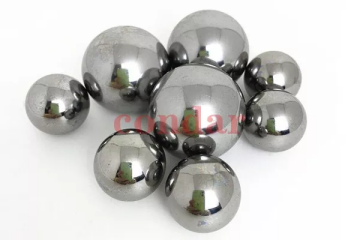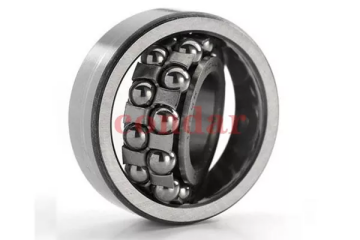For buyers, they have little knowledge about steel balls and even don't know the material. This allows many unscrupulous merchants to take advantage of this situation, passing off inferior products as good ones and faking genuine ones, thereby earning huge profits. It is possible that after spending money on them, they end up with a pile of scrap iron. Steel balls are mainly classified by material into carbon steel balls, bearing steel balls, stainless steel balls, and of course, there are other materials as well, but they are less commonly used.

Depending on whether they have undergone heat treatment (i.e., heating), they can be divided into two types. After heat treatment, the hardness of the carbon steel balls increases, and the surface hardness can reach around HRC60. For the unheated carbon steel balls, their hardness is similar to that of the steel, and it is around HRC28, commonly known as iron balls. The prices of these two types are different. The price of the heat-treated ones is higher, but it doesn't mean that the heat-treated carbon steel balls are better. The heat-treated carbon steel balls cannot be welded, and even if they are welded, they are not reliable and will fall off upon a slight touch. If you weld, you must choose the unheated carbon steel balls.
The most crucial point is that there are different grades. That is to say, bearing steel balls have various levels of precision. According to the national standard, they can be classified as G5, G10, G16, G28, G40, G60, G100, G200, G500, G1000, etc. G is the first letter of the word "Grade" in English. The subsequent numbers indicate different levels. The smaller the number, the higher the precision, and the better the steel balls. High-precision ones are generally used in precision machinery, auto parts, aerospace and other industries with higher requirements, while low-precision ones are generally used in industries such as grinding, crushing, and mixing.

Mainly classified by material, they are 201, 304, 302, 316, 316L, 420, 440, 440C, etc. There are national standard stainless steel materials, but there are also many non-standard materials on the market. The main problem is that the nickel and chromium contents do not meet the standards, and substandard materials are used, resulting in much poorer rust resistance and corrosion resistance. Therefore, simply comparing prices makes it easy to purchase non-standard material stainless steel balls, which is why they start rusting shortly after you buy them.
Therefore, when choosing steel balls, we should carefully make the selection and carefully identify and distinguish.
| Ball Type | Key Classification | Critical Properties | Application Guidance |
| Carbon Steel | Heat Treated | Hardness HRC60 Non weldable | Higher cost Avoid welding use |
| Non Heat Treated | Soft HRC28 Weldable | Requires welding applications | |
| Bearing Steel | Precision Grades G5-G40 | Higher precision Smaller grade number | Precision machinery Aerospace parts |
| Industrial Grades G60+ | Lower precision Larger grade number | Grinding Crushing Mixing operations | |
| Stainless Steel | Standard Grades 304/316 | Meets Ni Cr content standards | Corrosion resistance Critical uses |
| Non Standard Materials | Subpar Ni Cr content Rust prone | Verify material certs Avoid rust risk |